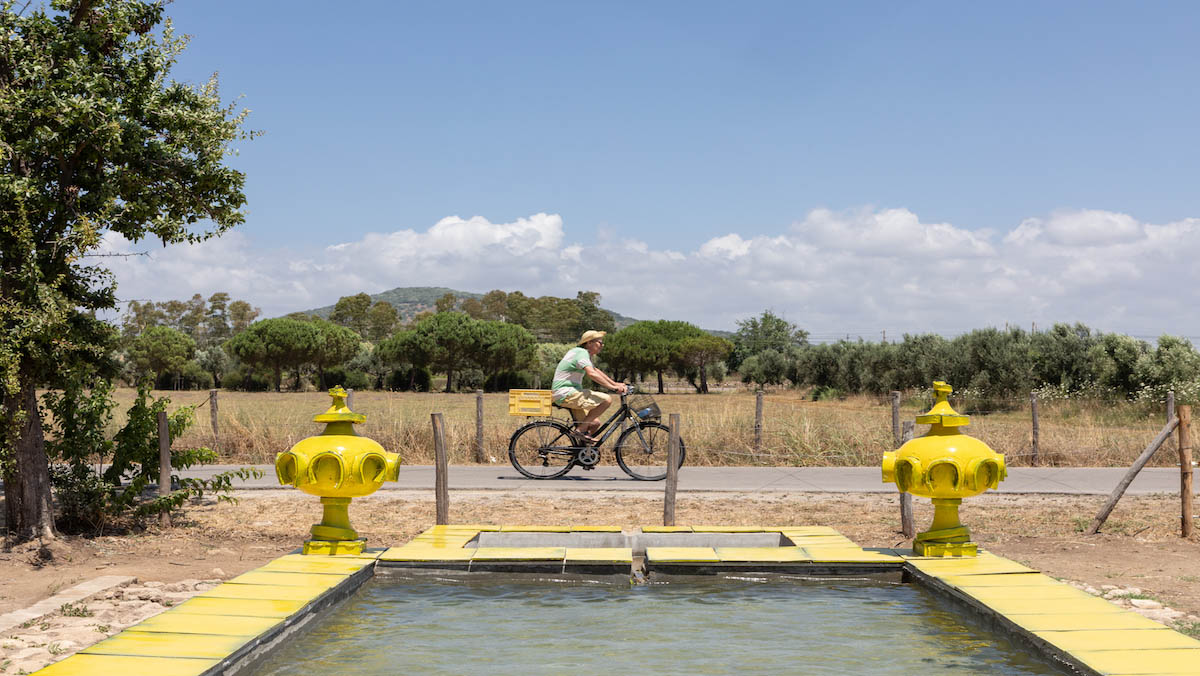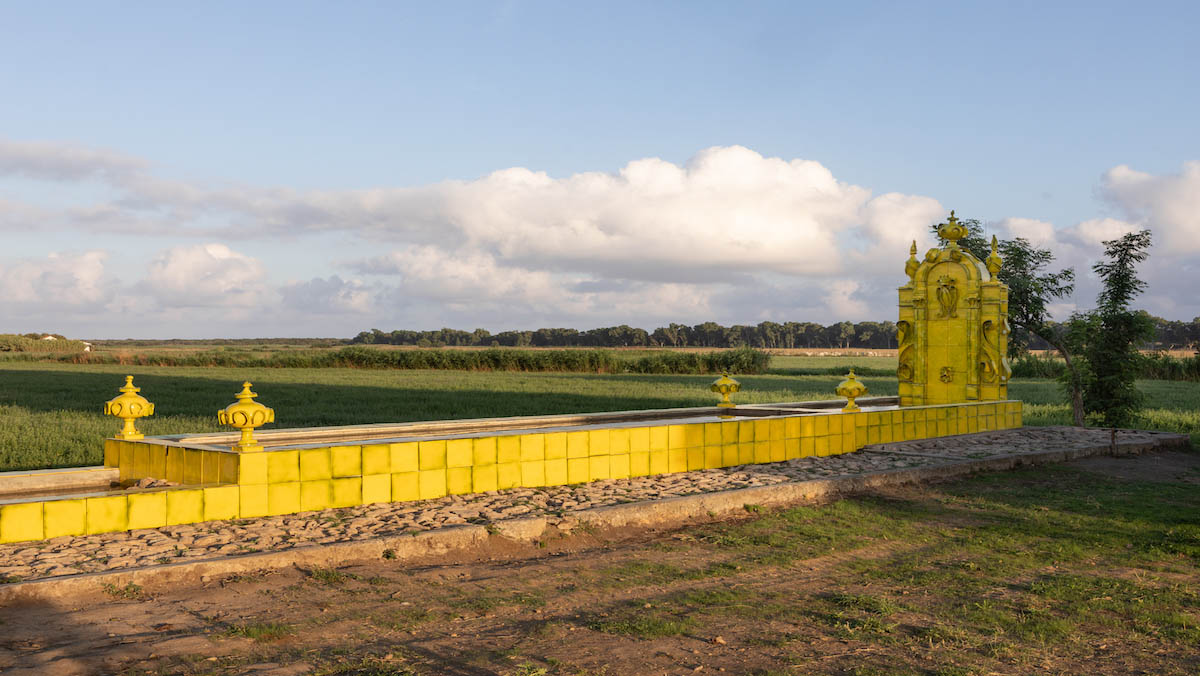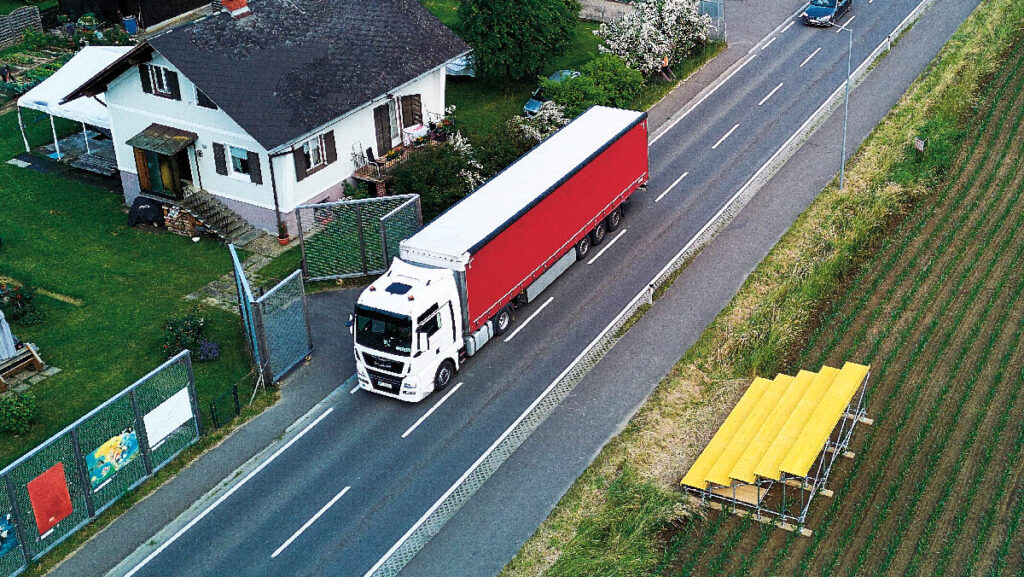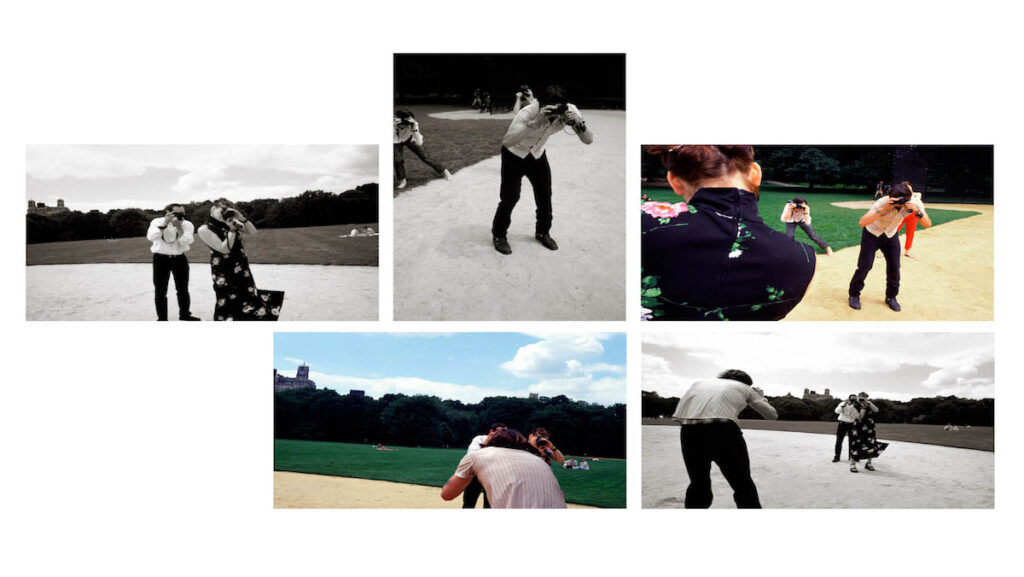
HYPERMAREMMA. V EDITION
Hypermaremma presents Fontanile, in collaboration with Terre di Sacra: the unprecedented site-specific work by Giuseppe Ducrot, at the Macchiatonda road in Capalbio. On the occasion of the fifth edition of the Festival, but with a multi-year planning and design project, Ducrot created a grandiose 15-metre long and 4.5-metre high ceramic Fontanile produced by the Association in collaboration with Terre di Sacra. The work is housed in their estate, which was founded in 1922 and has been restoring and preserving the Maremma territory for over 100 years, with the aim of protecting and honouring it. It also helped to establish the Lake Burano Oasis, the first WWF Nature Reserve in Italy.
For the realisation of the Fontanile and its yellow colour, by now the unmistakable signature of the artist, Ducrot relied on the iconic Bottega Gatti of Faenza, an excellence in majolica throughout the world that since 1928 has distinguished itself for its assiduous research into innovative techniques and languages and a production rich in unique works. Despite the terrible flood that hit Emilia-Romagna in May 2023, Bottega Gatti managed to complete the production of the ceramics destined for the Fontanile with admirable timeliness, postponing the realisation of the work by just one week.The work is the result of a study that Giuseppe Ducrot has been carrying out for years, in which he investigates technical and formal solutions that give shape to interventions characterised by colour contrasts in dialogue with the surrounding physical space.
For the first time, in fact, the artist creates a monumental sculpture that does not depend on a relationship with the architectural context, but rather one that <<stands on its own>>, as he himself states, as an absolute work. Starting from the pre-existing structure of a 1930s drinking trough originally intended for Maremma cows and recently renovated by Terre di Sacra, Ducrot reinterprets the forms to give life to an architecture in its own right, inserted in the uncontaminated landscape that surrounds it and that speaks to our European historical and cultural background.

Giuseppe Ducrot
Giuseppe Ducrot (1966, Rome) after a period at Giovanni Colacicchi’s studio, in the 1990s he frequented Vito Cipolla’s studio where he came into contact with sculpture, an expressive medium that he would later explore with a variety of techniques. Ducrot’s synthesis of culture, conceptualism and provocation culminated in the bust of the young Marcus Aurelius in 1996 for the façade of the Borghese Museum and the Erma di Ninfa for Piazza Capo di Ferro in Rome. Two years later he made two cornucopias and a Bacchic vase for the grand staircase of the Museo Borghese and, in 1999, he undertook his first private religious commission: a bronze bust reliquary of St Philip Neri for the Roman Basilica of San Giovanni Battista dei Fiorentini. For the Jubilee of 2000, Ducrot started a project for the Norcia Cathedral and a series of pastels for Marco Tullio Giordana’s film ‚I cento passi‘. Ducrot’s artistic career took a turn in 2003, with the commission from the municipality of Cassino for the monument to Saint Benedict. In 2005 he was commissioned a statue of St. John the Baptist for the Basilica of Santa Maria degli Angeli in Rome; in 2006 he made a commemorative bust of Ettore Majorana and in 2009 he received the commission for the marble statue of St. Hannibal Maria Di Francia for the Basilica di S. Pietro in the Vatican. Ducrot joined other protagonists of the contemporary Italian art scene in the restoration of the Noto Cathedral, a prelude to participation in the fifty-fourth Venice Biennale. In 2013, Pope Benedict XVI appointed Ducrot an academician of the Pontifical Academy of Fine Arts and Letters of the Virtuosi at the Pantheon. In 2015 he realised the solo exhibition ‚Giuseppe Ducrot Scultore‘ at the Macro Testaccio, Rome, curated by Achille Bonito Oliva; in the same year he created a ceramic fountain for the Hotel Le Sirenuse, Positano; in 2022 architectural motifs and outdoor decorations in ceramic, for the Hotel Vermelho-Melides, Portugal, as well as the marble portrait of Luigi Rovati for the Fondazione Rovati in Milan.
Hypermaremma
Hypermaremma was established in 2019 as a widespread art festival in the Maremma region with a programme that stretches from April to the end of September, accompanying the entire Tuscan summer. Founded by gallery owners Carlo Pratis and Giorgio Galotti together with collector Matteo d’Aloja, its objective is to involve the Maremma through the intervention of contemporary artists who, when invited to relate to the territory and its history, are capable of triggering a reinterpretation of the landscape and atmospheres of the place, leaving a mark that contributes to cultural tourism and the activation of synergies and collaborations with the local community and workers. Hypermaremma enhances the territory through works that enhance portions of the landscape as a diffuse open-air museum. The works produced by Hypermaremma are exclusively in places without territorial or temporal constraints, which can be visited at any time of day or night. In Hypermaremma’s curatorial approach, the dialogue between place and artistic intervention is fundamental: the landscape becomes an integral part of the work and very often of its very meaning.
Terre di Sacra
Terre di Sacra, a brand name of the S.A.C.R.A. company founded in 1922, is an estate of over 1000 hectares that stretches along 12 kilometres – of the Capalbio coastline and includes Lake Burano and the Buranaccio tower. The stages in the history of Terre di Sacra reveal the continuous attention to the environment and nature in the management of the land and landscape. Initially, with the reclamation of marshy and malaria-ridden land, then with the development of farming and breeding of Maremma cattle, and finally with the conversion in 1968 of the hunting reserve into a WWF Oasis, the first in Italy. Attention to the landscape has been the cornerstone of all activities: both in the recovery and restoration of the sharecroppers‘ buildings for a new tourist destination while respecting the architectural features, and in the maintenance and implementation of the greenery also to protect this uncontaminated area. Today, Terre di Sacra continues to dedicate itself to enhancing the territory by investing in organic farming and livestock breeding together with a slow tourist offer able to promote the magnificent landscape heritage in which the farm is located.
Terre di Sacra, Capalbio
Coordinates: 42.4100246, 11.3449461
Hypermaremma – www.hypermaremma.com




